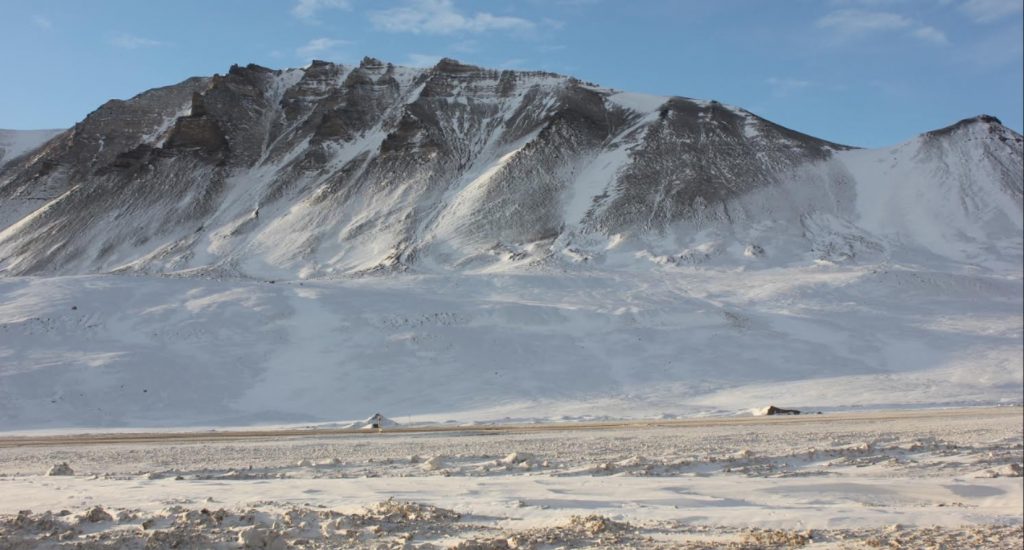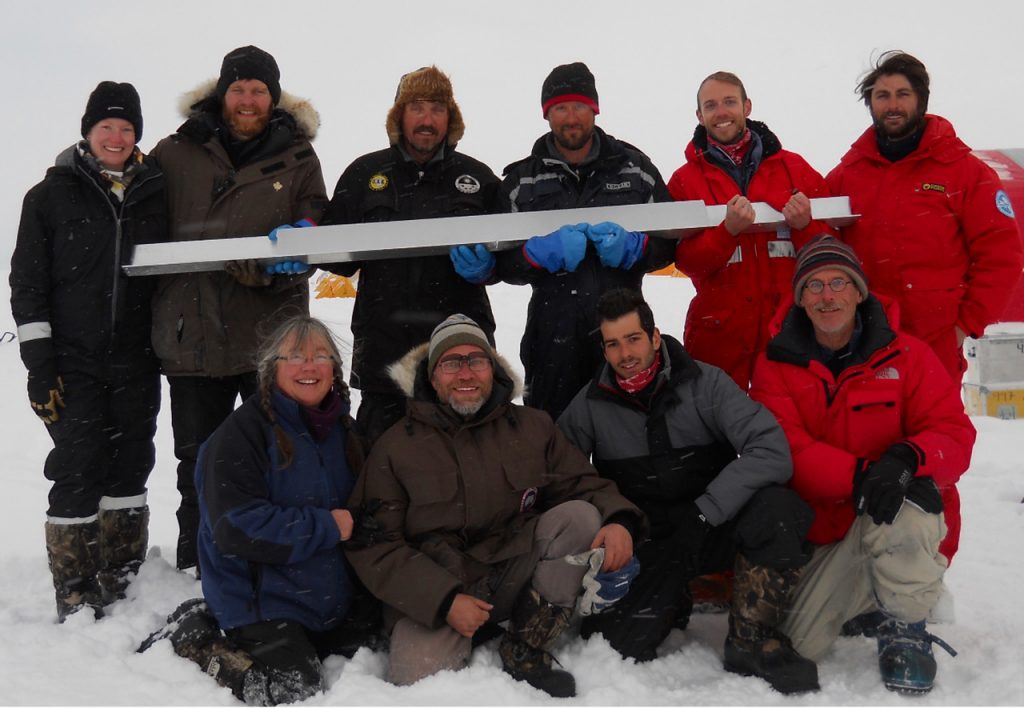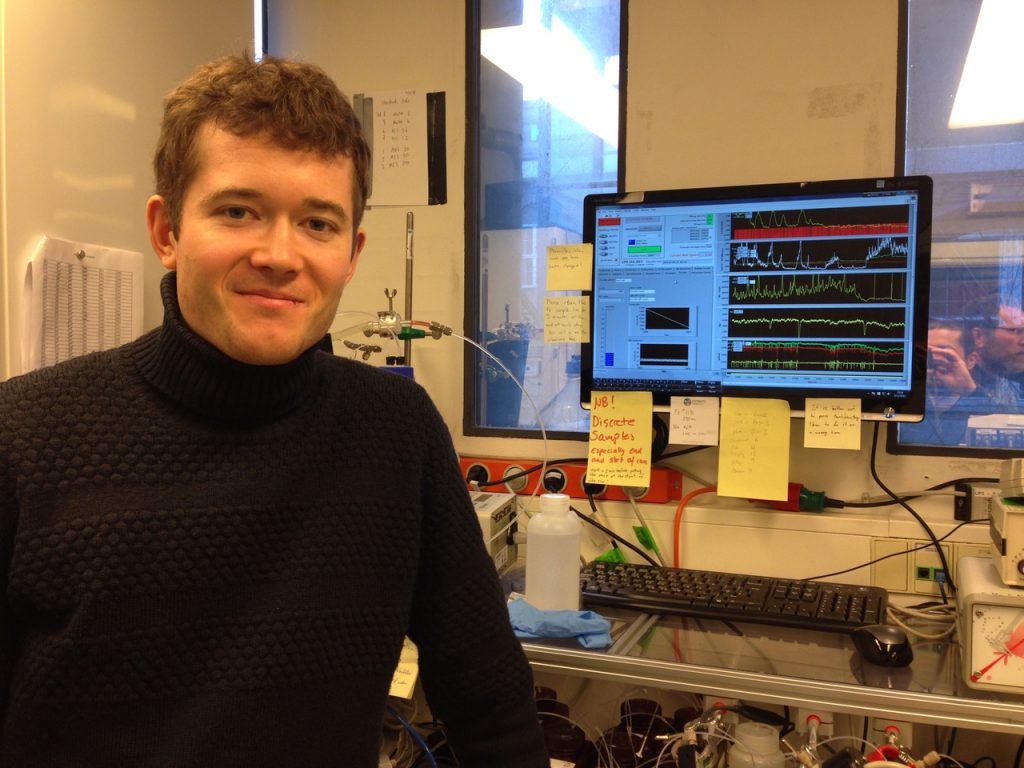
Grains of dust illustrate how fast a landscape is covered with ice after an ice age sets in.
The shift from a relatively warm interglacial to proper ice age is a typical tipping point in the climate system. The climate changes into another mode because dark ground converts sunlight into heat, but snow and ice covers reflect a large amount of energy back into space.
The last time such a shift took place was 113.000 years ago, when the Eem interglacial ended and frost once again conquered the northern hemisphere. During the next thousands of years a large part of North America, Asia, the whole of Scandinavia and a part of Northern Germany was covered in kilometer thick white ice – exactly like Greenland is today.
How fast did this change happen?
The time scale on how a landscape is covered at the end of an interglacial was not known until now when a new method, developed by Physics of Ice, Climate and Earth (PICE) at the Niels Bohr Institute, University of Copenhagen, shows that the grains of dust which are always present in permanent ice can detail the picture of the changing landscape.
The technique was recently published in Nature Communications, and exploits the fact that dust which reaches an ice cap typically has been whirled up from dry areas without snow or ice. After it lands it is embedded in the yearly layers of snow which through thousands of years under its own pressure become a cover of ice. But large grains and small specks of dust seldom travel the same distances. The small ones might come from the other side of the planet whilst larger grains of dust typically blow in from local areas.

The field team that retrieved the ReCAP ice core 
Marius Simonsen in the laboratory investigating dust from the ReCAP ice core
Postdoc Marius Simonsen and colleagues analyzed dust from new drillings in a local ice cap on the peninsula Renland, not far from Ittoqqortoormiit (Scoresbysund) in Eastern Greenland. By comparing large grains of dust in the ice with local dust from the area, they have mapped how fast Eastern Greenland was covered with ice and snow at the end of the last interglacial.
“With this new method we finally retrieve information on how the ice advances. It gives us a link to data on how fast we enter an ice age in a way we have never had before,” says Marius Simonsen.
The results document that it took 2400 years to completely cover the coastal areas of Eastern Greenland with ice and snow. In other words: It is a relatively slow process.
“It looks very much like we imagined it would. But these numbers are good to know. This is the first time we know with confidence how quickly Greenland becomes covered with snow. That can be built into climate models, so they can calculate in larger detail how these large shifts happen in the climate system,” explains Helle Astrid Kjær from TiPES.
Next step will be to conduct similar analyses on ice from The Mueller Ice Cap in Eastern Canada and maybe also The Hans Tausen Ice Cap on the tip of Eastern Greenland. Data, which might give us an idea on whether the speed of the ice age might have varied between geographical areas.
………….
Contributors to ReCap are Centre for Ice and Climate, Niels Bohr Institute, University of Copenhagen, Copenhagen, Denmark; Department of Earth and Environmental Sciences, University Milano-Bicocca, Milan, Italy; Lamont-Doherty Earth Observatory, Columbia University, Palisades, NY, USA; Department of Earth and Environmental Sciences, Columbia University, New York, NY, USA; Department of Geosciences and Natural Resource Management, University of Copenhagen, Denmark; Earth and Environmental Systems Institute, Pennsylvania State University, University Park, Pennsylvania, USA; Danish Meteorological Institute, Copenhagen, Denmark.
Drilling of the ice core ReCap was supported by The Danish National Research Foundation, the American National Science Foundation, the German Alfred Wegener Institute and the European Union Horizon 2020 Research and Innovation Programme. The measurements of dust were supported by the EU funding ice2ice.
The TiPES project has received funding from the European Union’s Horizon 2020 research and innovation programme under grant agreement No 820970.



Leave a Reply